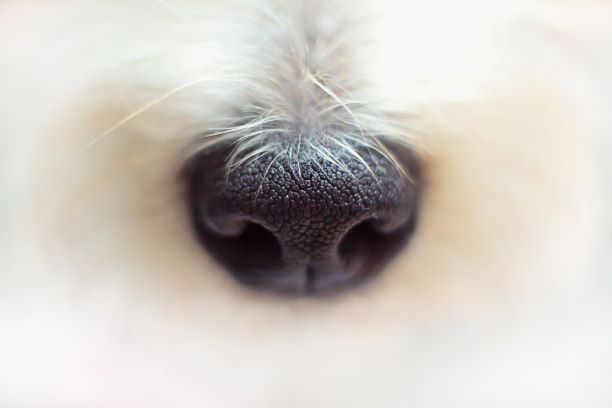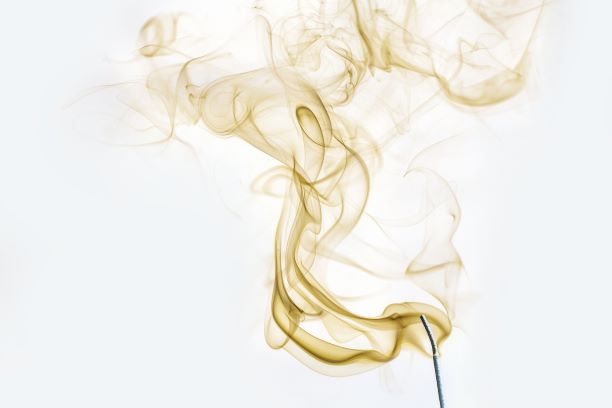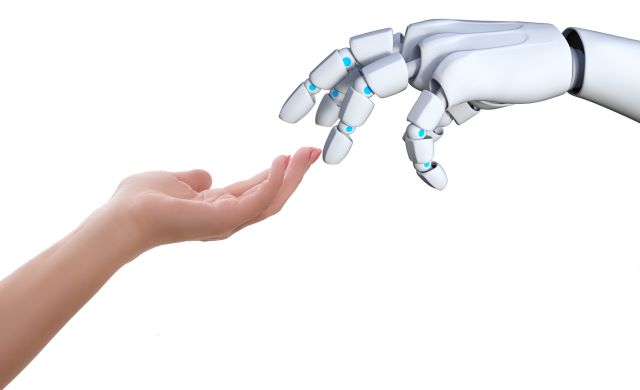Cosmetics & Personal Care
Aromatic AI 16th October 2019
By Editorial Team, Chemicals Knwoledge Hub
The use of artificial intelligence (AI) in the fragrance industry is changing the way perfumers work.
The use of artificial intelligence (AI) in the fragrance industry is changing the way perfumers work. The editorial team reports from the recent IFRA UK Fragrance Forum, which discussed the digital revolution taking place at the heart of the fragrance industry.
As AI and machine learning (ML) integrate themselves more and more into our world – think Google Maps, Translate and Adverts – new technologies are affecting us in all walks of life. The fragrance industry is no exception to this, as participants of the IFRA UK Fragrance Forum heard at this year’s meeting (Tuesday 15th October, Wellcome Collection, London, UK).
The difference between AI and ML, explained Dr Alex Wiltschko, Senior Research Scientist at Google Brain (USA), is that AI involves the use of multiple algorithms that can be apply to make things smart, while ML involves techniques that learn from data and don’t require programming for every situation. The evolution of ML from AI has been made possible now – although neural networks have been around since the 1980s – because until fairly recently we haven’t had the computational power needed for these kinds of systems. Modern computational powers, which give us – compared with that used to reach the moon in 1969, for example – unimaginable power just in our smart phones, combined with human creativity, have been the drivers for ML.
ML can be used to solve many of humanity’s challenges, declared Wiltschko, from auto-diagnosis of retinal degradation to reducing energy consumption at data centres. Within the fragrance industry specifically, he saw four main opportunities:
- Searching for new molecules that might, for example reduce skin irritation, improve biodegradability or reduce cost
- Reducing the environmental impact of fragrance production, for example by improving energy efficiencies
- Auto-generating ‘rough draft’ formulations that can be refined by the perfumer, saving the perfumer from menial tasks and improving productivity
- Maximizing sales and marketing through targeted activities based on consumer behaviour.
“Until everyone has access to these kinds of tools, we won’t realise the full benefits,” Wiltschko advised. He added that, at the moment, the application of AI and ML in fragrances is limited primarily by hardware for sensing odours and their meaningful interpretation.

Robot nose
Developing hardware for sensing odours begins with a full understanding of how humans and other animals sense odours themselves. In fact, explained Professor Thomas Nowotny, Professor of Informatics and Director of Research and Knowledge Exchange at the University of Sussex (UK), the methods of processing scents are remarkably similar across species. All animals, including humans, possess a number of olfactory receptor types, each of which responds to a range of odorous chemicals.
Developing hardware for sensing odours begins with a full understanding of how humans and other animals sense odours themselves. In fact, explained Professor Thomas Nowotny, Professor of Informatics and Director of Research and Knowledge Exchange at the University of Sussex (UK), the methods of processing scents are remarkably similar across species. All animals, including humans, possess a number of olfactory receptor types, each of which responds to a range of odorous chemicals.
“Odours are typically complex mixtures of chemicals,” said Nowotny. “However, we can perceive the components in a mixture just by smelling it.”
If we can understand how this is done, those learnings can be applied to the development of sensory hardware. Nowotny’s research has focussed on the olfactory processes of insects which, he says, can be used as an inspiration to find new AI algorithms.
Robot knows
Of course, it’s one thing for a robot to ‘sense’ an odour, but quite another for it to interpret it in a meaningful way. The ultimate goal is to objectively connect human perceptions of taste and smell to products in a manner than can be processed and interpreted by computers.
Of course, it’s one thing for a robot to ‘sense’ an odour, but quite another for it to interpret it in a meaningful way. The ultimate goal is to objectively connect human perceptions of taste and smell to products in a manner than can be processed and interpreted by computers.
Dr Josh Silverman, CEO of Aromyx (USA), explained how his company is digitizing the senses of taste and smell, with the aim of reaching precisely this goal. Aromyx’s bioengineering expertise uses biosensors comprised of olfactory receptors to detect odorant molecules in complex environments. Efforts to ‘map’ these molecules have led to the development of a 10-dimensional, AI-powered model that provides systematic classification and quantifiable descriptions for more than a trillion odours.
“Our goal is to use these sensors to create data,” explained Silverman. “We are building a database and we’re getting smarter and smarter… Eventually, we intend to produce insights that understand human perceptions, subjectivity and preferences.”
The company has developed new technologies capable of solving diverse sensory problems across a range of industrial processes and products. As a recent example, a large multinational lemon juice company invited Aromyx to help with its quality control. Aromyx’s biosensors were able to distinguish fresh and damaged/degraded juice samples to a high degree of consistency and reliability. Furthermore, the biosensors outperformed the manufacturer’s existing human taste panel, being able to improve quality control with greater consistency and more speed than the ten humans previously doing the job.

Robot perfumers
As with other industries, digitalization is new to the fragrance sector, but a number of new technologies that bring together science and creativity are emerging. Givaudan, the world’s largest flavour and fragrance company, has digitalized most processes over the past decade. Now, it is pioneering the use of AI in fragrance creation. Valérie Drobac, Digital Innovation Manager from Givaudan, explained how the company is using AI to support perfumers, and how it is being used as a tool in the day-to-day life of these creative specialists.
Carto is Givaudan’s AI-powered system that reinvents the way perfumers create fragrance. Launched in April 2019, Carto brings together science and technology, to the benefit of the perfumers that create Givaudan’s fragrances. The new system is designed to intelligently use Givaudan’s ‘Odour Value Map’ of its unique ingredients to maximize olfactive performance in the final fragrance. The system is able to suggest smarter creations, with automated ingredients adjustment, and the intuitive and inspiring navigation of a fragrance palette.
The aim, explained Drobac, is to leverage AI to develop on-trend products that will be new and inspiring for consumers, while limiting the menial tasks that perfumers need to perform by simplifying their work yet keeping them at the centre of the experience.
Robot safety
So far, everything we’ve discussed has related to the combination of AI and fragrances in the pursuit of automating the detection and interpretation of odours. But what if AI could be used to exploit our own detection and interpretation of odours, to our benefit?
Dr Dmitrijs Dmitrenko, from the Sussex Computer Human Interaction (SCHI) Laboratory at the University of Sussex (UK), explained how scents can make driving safer by subtly changing our behaviour.
“Research has demonstrated the effects of scent on drivers,” Dmitrenko explained. “Certain scents can lead to higher alertness, better mood, improved braking performance and reduced drowsiness.”
For example, a puff of lavender has been shown to slow drivers down, while a puff of peppermint can help them keep further back from the car in front. If used in combination with usual visual and audio notifications (red lights and beeps), the addition of olfactory cues can be very effective. Scents can be helpful in making drivers more aware of other notifications, and in making them more responsive to other warnings. AI comes into play by predicting that a notification or warning is about to become necessary, and can send the puff of odour in advance of the visual or audio cue, to make drivers more receptive to those warnings.

Robot uprising?
We are creatures of habit, and we are often resistant to change. But in this case, could our concerns be justified?
A prime concern of participants of the IFRA UK Fragrance Forum was the loss of creativity. If, for example, Givaudan’s Carto system is designed to “automatically adjust ingredients”, will the perfumers’ creativity be over-ridden by AI? As this technology sweeps across the fragrance industry, are we doomed to a future of fragrances that are good enough, but which all smell the same as they fit an AI algorithm for what a scent is ‘supposed’ to be?
In a brave but brutally honest response to this question, Aromyx’s Silverman highlighted the industry’s current tendency to always be ‘on trend’ and follow the latest fragrance fashion, which can have a tendency to lead to that doomed scenario anyway. In fact, he assured the audience, the new technology will give perfumers the tools for faster development and could encourage more variation and innovation. This could make niche fragrances more accessible to consumers.
The perfumer will always have the final say on creativity, agreed the panel of expert speakers. To date, it has been impossible to create a robot that demonstrates human creativity, said Nowotny. AI and ML are tools that will make perfumers more efficient, and as a result they will have the time and freedom to become more creative and innovative.
Another concern was the impact of AI on the workforce. Referring to Aromyx’s earlier example at the lemon juice factory, I wonder how many readers noted the final sentence about “the ten humans previously doing the job”. That’s right – the company’s human taste panel was out of a job, having been replaced by the more reliable and consistent biosensor system.
This has been a standard concern for decades – throughout the industrial revolution, and now with the digital revolution. However, as in the past, this new technology is more likely to change people’s jobs than remove them altogether. Using the emergence of Adobe Acrobat as an example, in the 1990s artists across the world were worried about their jobs. Today, those artists are still creating art but they have adapted to work with the new technology to create innovative art that wouldn’t have been possible before. The same, asserted the panel, can be true of fragrance creation.
As with other industries, the world of fragrance is about to be digitalized. The challenge is to ensure that the new tools are used to support creativity and encourage innovation, rather than allowing technology to stamp out the human element in the ever-increasing search for cost savings and efficiencies. Those companies getting the balance right could be on to a winner, both from a business perspective, and also in terms of innovation and creativity, as AI and ML could open up a whole new world of opportunity.
Author:
Editorial Team, Chemicals Knowledge Hub
E: editor@ckhglobal.org
Editorial Team, Chemicals Knowledge Hub
E: editor@ckhglobal.org



